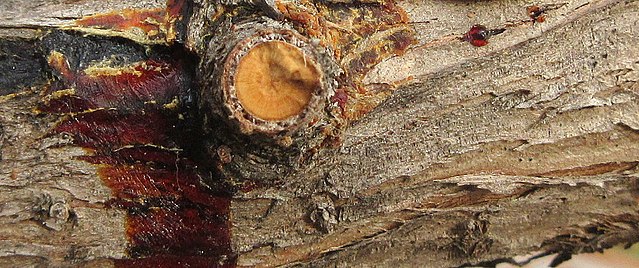Introduction
Seiridium canker is a fungal disease caused by three species of fungi in the genus Seiridium. Of the three, Seiridium cardinale is the most widespread, affecting various members of the cypress family. Seiridium cupressi and Seiridium unicorne also infect cypress trees, albeit with less frequency. Susceptible trees are infected through cracks in the bark, which may be created through improper pruning cuts, mechanical injuries, and storm damage. Plants that are drought stressed, or suffering from other environmental stressors are more prone to infection. Seiridium canker is a highly destructive disease that can decimate infected plants. Severe infections can kill small plants within a single growing season. Larger trees may collapse within 2 to 3 years.
Distribution & Habitat
The range of Seiridium canker extends across North America, Europe, and Australia. If conditions are favorable, Seiridium canker may occur wherever susceptible plants are present.
Hosts
Seiridium canker infects arbovitae, baldcypress, Incense cedar, and juniper, as well as Arizona, Italian, and Leyland cypress.
Disease Cycle
In spring, when conditions are sufficiently moist, cankers that have formed on diseased trees rupture, and release infectious fungal spores. The spores are disseminated by air currents or splashes of rain to nearby trees, where they initiate new infections. The spores invade susceptible trees through bark openings, and germinate within the woody tissue. Once established, the fungus exudes toxins that induce the formation of cankers on diseased sections of the plant. This disrupts the plant’s vascular system, preventing it from absorbing water and nutrients. As the cankers enlargen, they girdle the branches, twigs, or stems they have developed on. This results in extensive foliar dieback.
Over time, small fruiting bodies called pycnidia arise on the cankers. The pycnidia resemble tiny black blisters. They produce infectious spores, or conidia, which are released during moist conditions. If rainfall is sparse, and dry conditions persist, the spores will not be expelled from the cankers. Instead, they will overwinter, and await release the following spring. The spores will retain their viability for at least one year.
Symptoms of Infection
Infection symptoms are not always readily apparent. Vigorous trees may not exhibit symptoms of infection for several years. Initially, smaller branches will become discolored, brightening from green to yellow. As the infection advances, the branches will eventually turn brown. This discoloration may be relegated to one section, or appear in different portions of the crown. Infected bark will brown, and decay.
The cankers form directly below the affected foliage. They appear as reddish, oval-shaped, sunken areas on the plant, with small fruiting bodies located within their margins. Drops of resin will often seep from the canker’s margins. Ants may ascend the plant in order to harvest the resin.
Management
- There is currently no chemical control available for treatment of Seiridium canker.
- Extract diseased foliage by performing pruning cuts several inches above and below the canker. This will ensure that the infected area is removed. Disinfect pruning equipment with a solution composed of one part bleach and nine parts water. Safely dispose of the infected material. Avoid using diseased material as compost.
- Severely infected trees should be culled to prevent the disease from spreading.
- When planting, select plants that exhibit an increased resistance to Seiridium canker. Some notable examples include Arizona cypress, eastern red cedar, Japanese cedar, Sierra juniper, and Spartan juniper. Ensure that plants are properly spaced to decrease the incidence of infection.
- Fungicides containing macozeb can be applied in spring and fall to provide some protection from the spores.
- Maintain tree vigor through sound cultural practices. Ensure that plants are sufficiently watered, especially during extended periods of drought.
- Periodically thin out plants to improve air circulation, and promote a rapid drying of the crown.
- Apply a layer of organic mulch around the base of susceptible plants to improve the soil quality, moderate the soil temperature, and preserve soil moisture.
- Avoid mechanical wounding of plants.
Photo courtesy of Mushroom Observer CC-by-3.0


